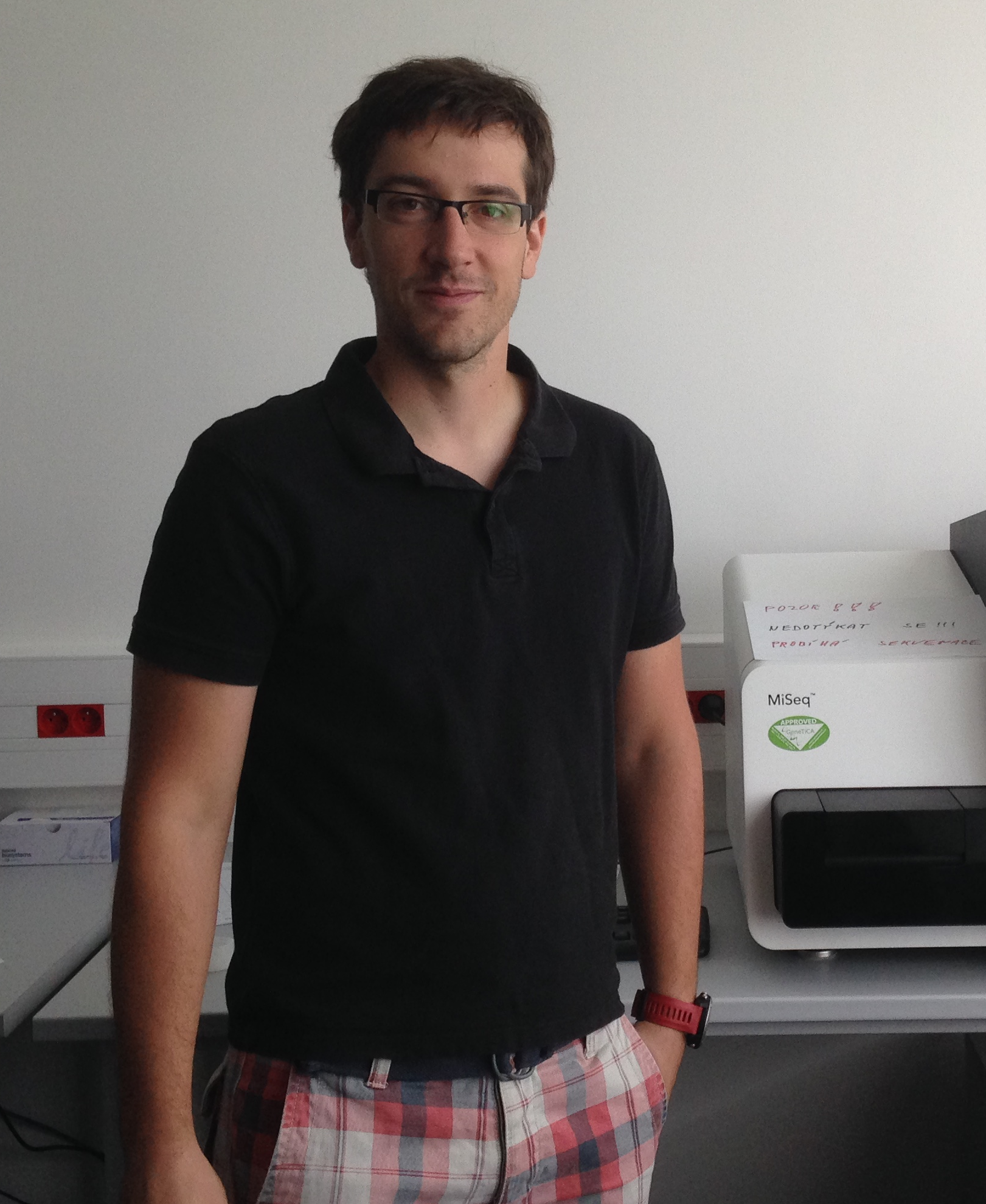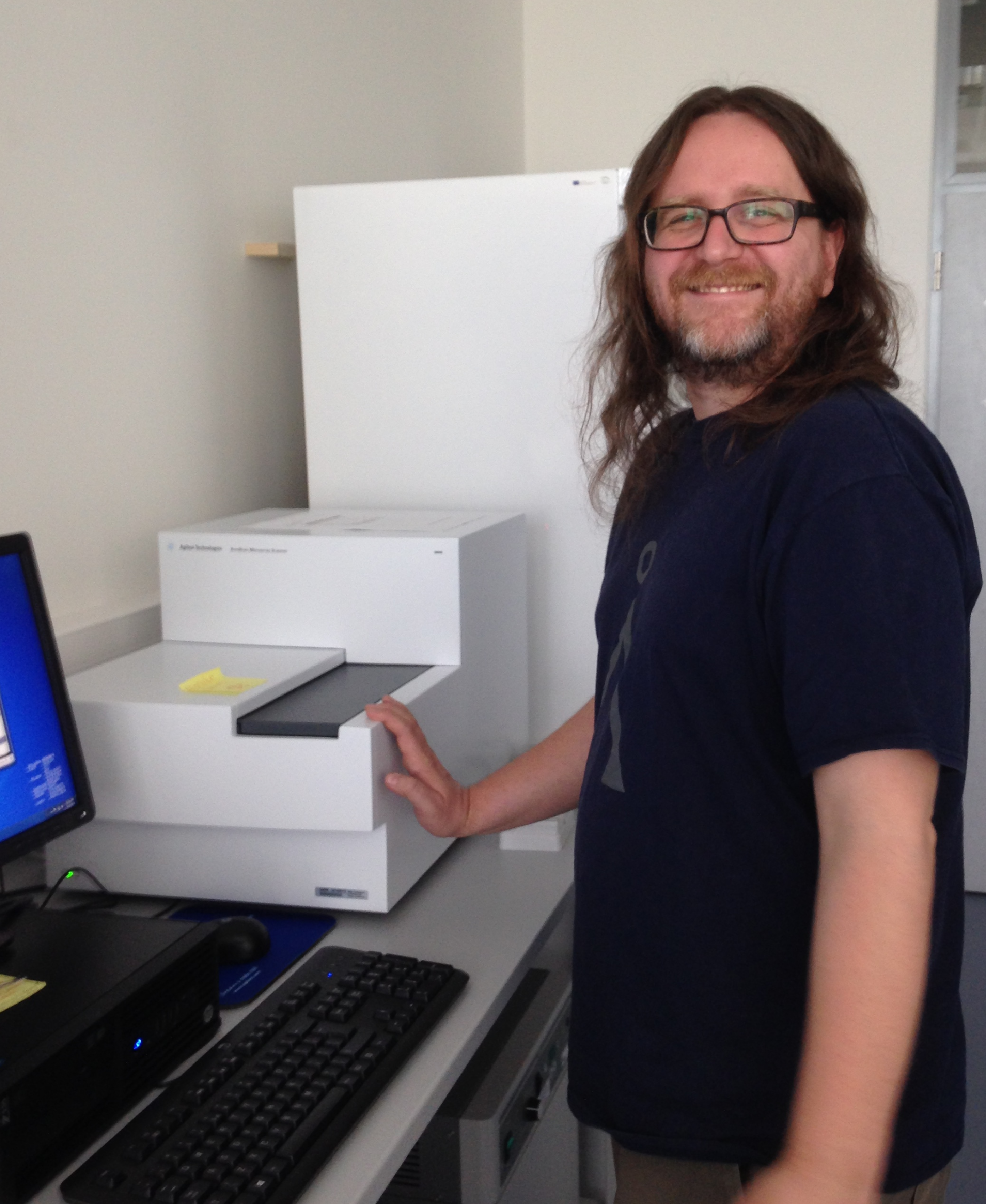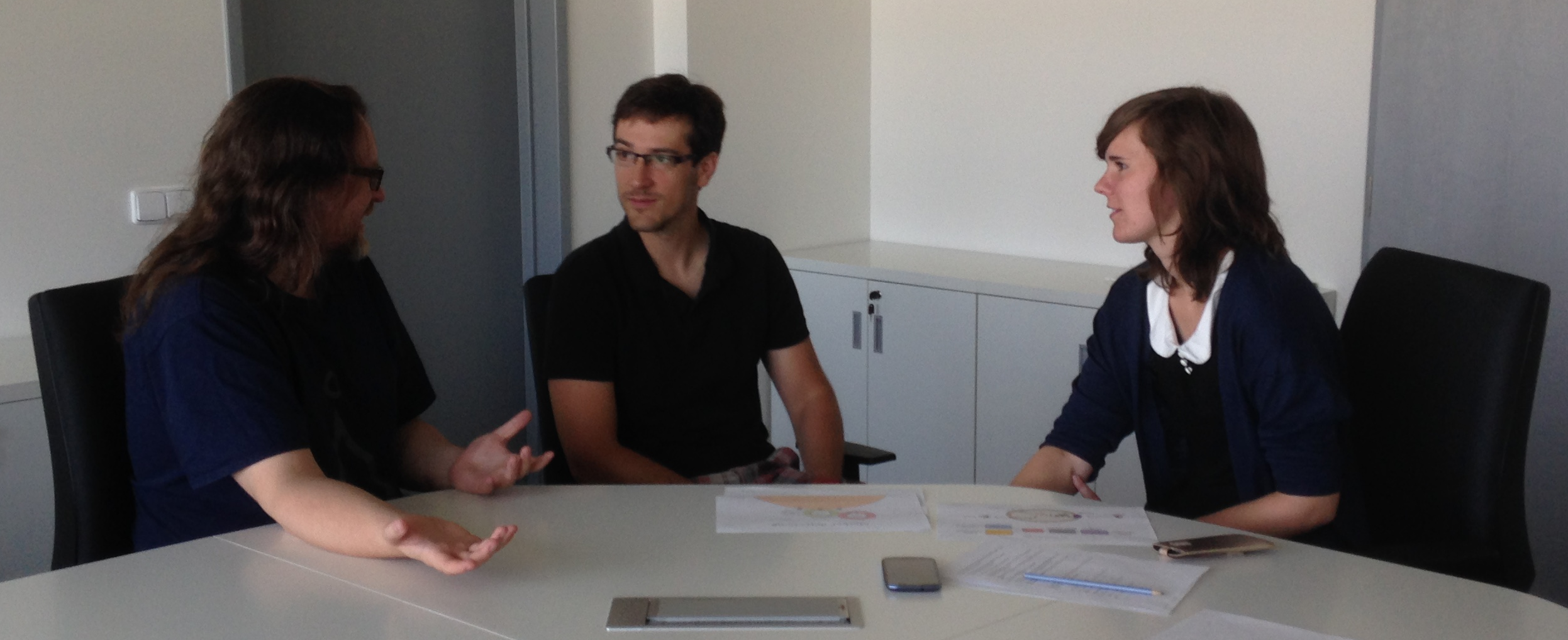Team:Czech Republic/Practices/Interview
Interview
Contents
Motivation
To get a professional opinion on our project and to learn more about cancer and CTCs, we conducted an interview with two cancer specialists. After the introduction of our project idea, we discussed some particularly interesting points. We received recommendations that helped us to improve our project. This interview was not only helpful and enriching but also led to an agreement to collaborate with the Laboratory of Tumor Biology in the near future.
Key outputs
A suggestion to use a color change instead of the agglutination as an indicator of CTCs' presence. We modified our experiments in module 2 and used GFP as indicator of successful communication between IODs. We are definitely going to extend the use of color indication in further research.
A recommendations to test the agglutination on a slide. We have the possibility to perform our experiments in microfluidics. We appreciated this advice and used microfluidics in many of our agglutination experiments.
The experts
Mgr. Pavel Pitule Ph.D.

Mgr. Pavel Pitule, Ph.D. is a junior researcher at the Biomedical Center at the Faculty of Medicine in Pilsen. He is the research group leader of the Laboratory of Tumor Biology.
Mgr. Pavel Ostašov Ph.D.

Mgr. Pavel Ostašov, Ph.D. is a researcher at the Biomedical Center at the Faculty of Medicine in Pilsen. He is a member of the Laboratory of Tumor Biology.
Interview
Could you introduce yourselves and explain your research to us?
P: My name is Pavel Pitule, and I work in the biomedical center of the Faculty of Medicine in Pilsen. Our group is focused on cancer biology. We are looking for biomarkers to use in prognosis and prediction of colorectal cancer. There are two branches of our research, the first one uses molecular methods such as quantitative PCR and microarray sequencing to find mutations or changes in expression in tumor tissues and the second is focused on circulating tumor cells (CTCs) and we are trying to find specific cells released from the tumor into blood stream and characterize them with regards to disease progression.
O: I’m Pavel Ostašov, and I work in the same group. I am mostly in charge of microscopy and processing of sequencing data.
Have you encountered any synthetic biology concepts or applications in your research? What are some examples?
P: I have only heard a little about synthetic biology and have not used it. From what I have heard it can be used for analyzing blood particles.
O: I know there are certain modified cells that release a toxic protein that is able to find the cancer cell. The release of the toxic protein can kill the cancer cell.
What is your view on synthetic biology in research and in real life applications? In your opinion, would the research benefit from using synthetic biology more?
O: It would be nice to use it for detection of changes in cytokines and differences in levels of screening molecules.
P: It could be used for detection of metabolic products of a drug. Some cancer cells can modify prodrugs, which are used in chemotherapy and then expel it outside of the cell. So monitoring cells' resistance to the therapy would be great.
Based on what you’ve said, I think you will like our project.
And since it touches the field of your expertise, we would like to hear your opinion and view on it.
Click here to read how we described our project...
P: If you want we can design an experiment. You will so-called spike the blood by a cancer cell line with no markers, and you can test the concentrations.
O: We can give you vials where there will be cancer cells and no cancer cells and we will not tell you which is which.
P: You could try some concentration and determine how sensitive your system is.
That is very kind of you. It would be very nice for future applications, because we want to focus on this project even after the competition.
We think that our approach provides easier and quicker diagnosis than the ones used now. This should be able to detect one CTCs in a million of different blood cells.
P: One from a million. That makes sense. It can work.
So it can diagnose cancer in an early stage of the disease.
O: Seems interesting.
What is your opinion? Do you see any factual flaws or advantages of this idea?
P: I think it is very good and if it proves it really works with the experiment in yeast...
O: I would prefer a color reaction instead of agglutination.
Why would you prefer a color reaction? To make it more obvious?
O: I would say yes. It’s easier to say: 'Okay, it’s pink now', then: 'Is or is not there any precipitation'?
P: Are you going to detect it in tubes?
Yes, we want to use tubes.
P: The test for blood groups is very nicely visible on a slide because it is low volume and you can see how erythrocytes agglutinate. However, in a tube it will be much more difficult.
We have something to think about, thank you.
P: And just here, the idea is very nice but it is still limited to the markers you think the cancer cells have. And there may be a problem that some cancer cells lose their epithelial markers and express some mesenchymal (undergo EMT) ones when they are leaving the tumor.
When this transition happens, how fast is it?
P: It is still a question. Because almost all of the methods, which are used for detection of CTCs are based on epithelial markers, we actually have no idea how many mesenchymal-like cells are there. So for example our method is trying to find also the cells which underwent EMT, but the problem with mesenchymal transition is that many of the mesenchymal markers are also expressed on white blood cells.
So if you knew what combination of markers to look for then you could find them?
P: Yes.
Could you then distinguish mesenchymal cells from white blood cells?
P: We would probably do it by some positive and negative selection. So you would not include only positive markers but also markers which we suppose tumor cells cannot have.
Can you please tell us what the current superior diagnostic approaches are? Do you see innovation in our approach?
P: Currently I think the normal diagnosis is based mostly on trial and error. The diagnosis is usually fine, you know there is some tumor, but to choose the correct treatment is difficult because you do not have online monitoring of the disease. You can do some CT scans or MRIs every half a year but in some cases of aggressive tumors it is not enough. There is an idea that CTCs will be used every month or two months to see if there are any changes in the patient. Today, there is only one FDA-approved test for CTC detection based on the EpCAM molecule and there are about 20 others, which are trying to do it better. I do not think that any one of them is currently used for routine monitoring of the disease in the Czech Republic. If your project works it might be relatively cheap, which would be a good advantage.
You said that the CTCs could be monitored in a patient monthly. What exactly would you monitor except for the number of the cells?
O: If you have several assays you can monitor changes in expression of different markers which are potentially important.
P: For example in our project, we are trying to monitor the number and then characterize them by single cell sequencing to find out if they are somehow changing properties of their genome. It brings us information about whether these cells are just dying cells from metastasis or if they are alive and evolving to some more aggressive form of cancer.
P: Do you want to use it for patients who already have cancer or as a monitoring tool?
The system we are developing could be used for both applications. At the present stage, we can still choose between both of those possibilities.
P: For example in colorectal cancer, there are some fecal occult blood tests, which are done every two years after 50 years of age. They are working, but it is not the best examination we could have. If it would be possible to test from blood using your system, that would be great.
Do you recognize any legal problems with developing new diagnostic technologies using yeasts?
O: I don’t think so. The legal problem would be to get it into a clinical environment. If you really want to use it for diagnoses it has to go through all the evaluation processes. But otherwise I don’t think there is a problem.
Could you elaborate more on the difficulties of using CTCs for diagnosis? You said that their low number is a disadvantage for diagnosis. Are there any other?
O: Each one of them is different.
P: To distinguish between the cells which are released passively from the tumor and those which actively migrate from the tumor is probably the biggest problem.
If you would compare diagnosing the cancer form CTCs to diagnosis from biopsies. How would you describe it?
P: It’s not about the diagnosis but about the evaluation of the aggressivity of the tumor. Both of them have the disadvantage that you get only a small part of the tumor. In the biopsy, you can get a lot of stromal cells and just a few cancer cells depending on where you take the sample from. It is similar with CTCs, you could only detect the cells which are not important for the future spreading of the tumor. And the question is still how to choose the important ones.
O: There is one other advantage of CTCs: if you are taking blood it’s not very invasive. If you take the biopsy, you can actually release some cells into the blood and help the tumor to spread. In case of CTCs, they are already in the blood and you just take a sample.
P: And those, which are really active can probably survive longer in the blood, so there is a greater chance that when using CTCs you can detect the cells important for the spreading.
Is there any kind of cancer that is harder to diagnose?
P: I know there are troubles with diagnosing brain tumors. It is still a question how to find brain tumor cells in the blood. They are there, but again, they have different markers. Also some pancreatic tumors are difficult to diagnose because they are usually detected in a very late stage, when it is too difficult to help the patients.
What is the sensitivity and specificity of the current diagnostic tests and approaches?
P: I will start with colorectal cancer again. There are different types of blood tests. And their sensitivity is very high (over 95%). Specificity is a little bit lower, but if you have a positive test, you undergo colonoscopy, which is 100% specific and the sensitivity is also very high. For the imaging methods, it depends on the size of the tumor. Usually, imaging techniques like a CT or MRI are the consequence step after a colonoscopy or a positive stool blood test. For CTC diagnosis, both are around 80%.
Acknowledgement
- Biomedical Center of Faculty of Medicine in Pilsen
- Mgr. Pavel Pitule Ph.D.
- Mgr. Pavel Ostašov Ph.D.
